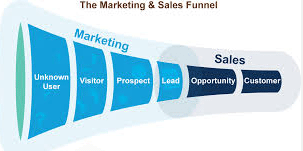As a full-service B2B digital marketing agency we have seen that just working to capture a lead is not enough to fully realize the potential value of that lead. As prospects move thru the marketing and sales process lead data can be automatically imported into a marketing automation tool or CRM platform. These tools, and the processes required to utilize them, are numerous, complex and powerful. Here is a basic overview of the process.
Lead Generation
In a previous post I discussed the front end of the lead funnel and the many digital marketing channels available to make first point contacts with potential clients. In this blog I cover post lead capture activity.

Lead Scoring and Cultivation
After a lead has been generated, the first step is to grade or qualify that lead, this can be done automatically or manually by having marketing and sales reps reach out to the prospect. Lead scoring systems vary widely. To keep it simple we will cover a common grading system that divides leads into marketing leads and sales leads.
- Marketing leads typically stay in the marketing automation tool for cultivation.
- Sales leads usually transfer to the sales team for further engagement.
Lead nurturing and cultivation programs can be very effective if properly implemented and managed — increasing the ROI of lead generation programs by up to 30%. Based on lead grade, personas, and other attributes — lead cultivation activities can be highly customized for each prospect.
Automating the Process
Marketing automation tools help automate and streamline this complex process. These programs, with proper oversight, can automatically create activity schedules and deliver highly targeted communications and content over time to help move prospects further down the sales process with the ultimate goal that they become a sales qualified lead and ultimately a customer.
Additionally, these tools also provide useful data to help improve the efficiency of the entire lead generation program. They provide feedback on which marketing messages and assets are most effective, the timing of content delivery, the most and least productive marketing channels, and the most effective landing/web pages. The ultimate goal is to automate this feedback loop as much as possible to streamline the entire lead generation/management process from first touch to sale. It’s a lofty goal but can be done with proper staff, resources, tools and process management.
Think Beyond Lead Capture
As you can see there are many activities and efforts that occur both before and after the lead capture event. All of these potential touch points impact the customers’ journey and their path to creating revenue for your company. By giving these efforts proper attention and resources you can significantly increase the number of leads that become customers and improve the ROI of your digital lead generation program.
Don’t Miss a Beat!
Receive current information, expert advice, helpful tips, and more…
* Your privacy is important to us.
